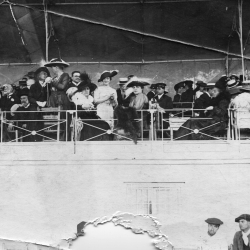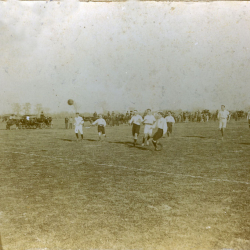

The grounds of the Tablada field have been known by that name since at least the 15th century, and long before that they were the nerve centre of war operations in the conquest of the city. In 1247, Ferdinand III set up camp there from which he laid siege to the city, and Admiral Bonifaz moored his armada on its shores. The so-called displays were constant from the 15th century onwards, as reflected in the 19th century press. The vast plain of Tablada, located to the south of Sevilla, was owned by the City Council and was the grazing ground for cattle destined to supply meat to the city's markets, but also for bulls used for bullfighting during fiestas and where the city's inhabitants were free to take their horses and other livestock. It was an area of common use, a grandiose meadow watered by the Guadalquivir.
In the second half of the 19th century, its use expanded and other types of activities proliferated. The Sevilla Horse Racing Society built a racecourse and a pigeon shooting range was installed. The racecourse was located on the banks of the Guadalquivir, on its left bank at that time, in the so-called Gordales riverbed.
A multi-purpose place if ever there was one, Tablada became a fundamental element for the recreation of the people of Sevilla, with a host of leisure and sporting activities taking place on its grounds.
After the formation of Sevilla FC on 25 January 1890, the facilities of the Tablada racecourse became its first playing field, having the honour of hosting the first football match between two different clubs and under the rules of the Football Association on 8 March 1890.



 Spanish
Spanish
 English
English
 عربي
عربي
 中文
中文
 日本語
日本語